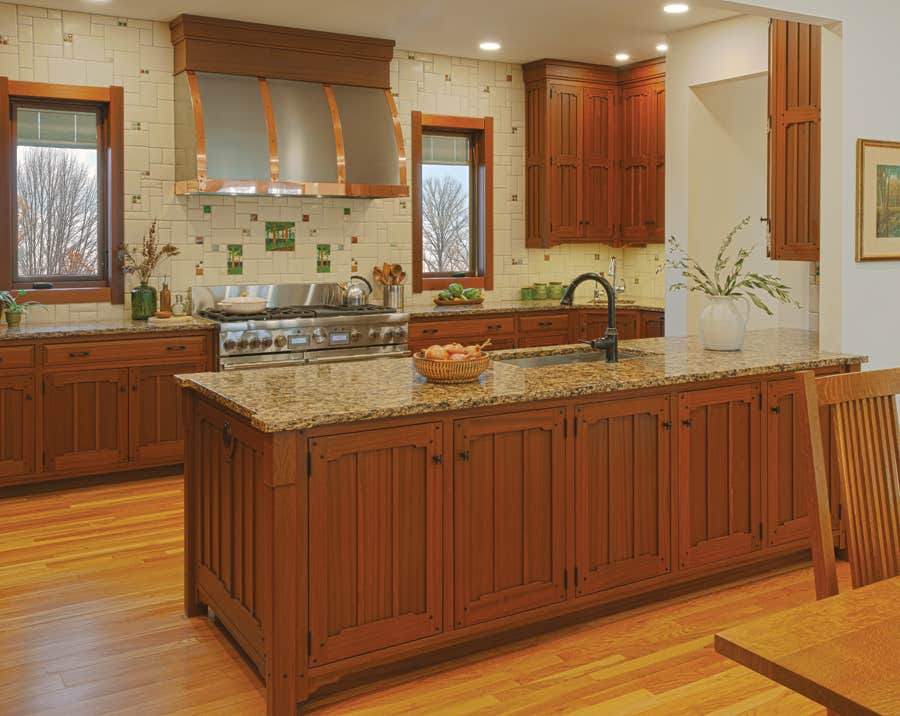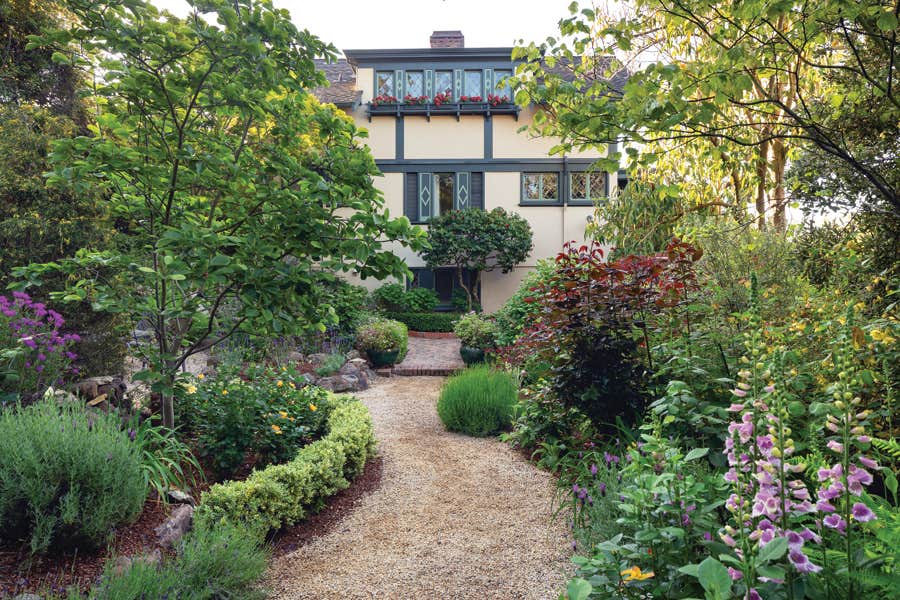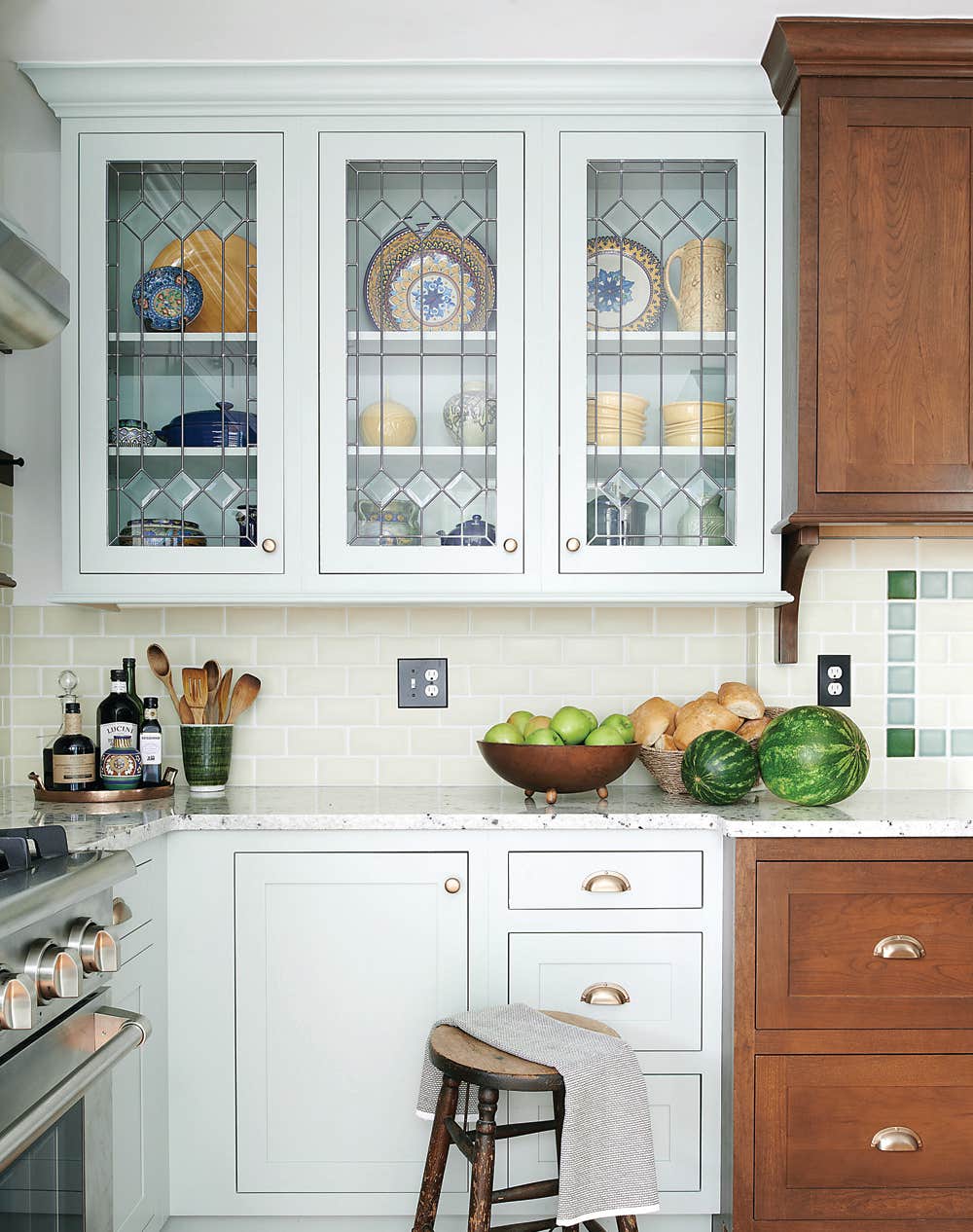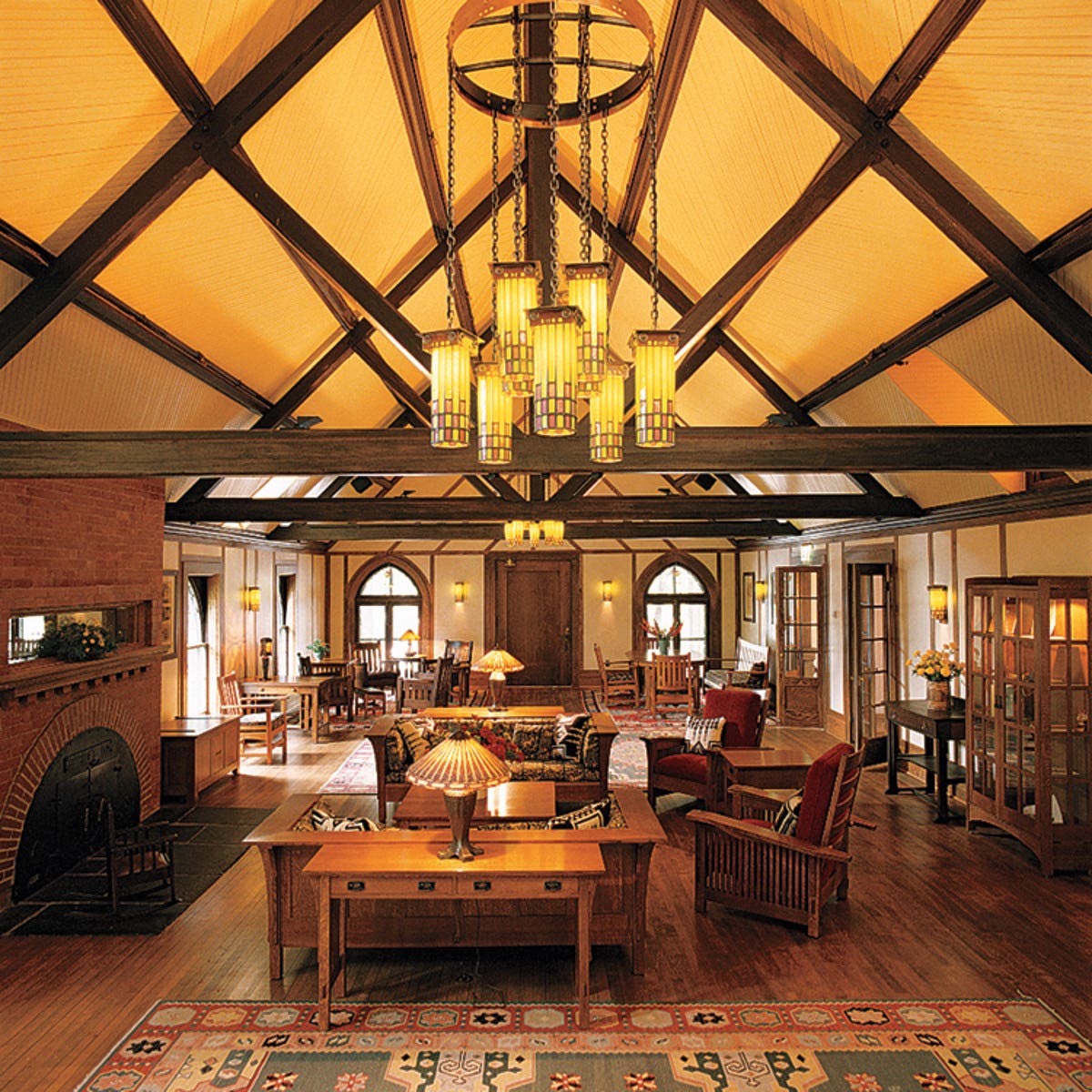Spanish & Art Deco Tile Fantasy
Exuberant color tile in bathrooms of the 1920s inspires us today.
Brilliant “California” tile, often in stylized patterns inspired by Islamic (that is, Hispano–Moresque) art, was perfect for the Mediterranean-style houses and Spanish Colonial Revival casitas built during and just following the heyday of the Arts & Crafts Bungalow.
Innovations in tile manufacture and installation made tiling more affordable; magazines and plumbing catalogs extolled the colorful modern bath. The was the heyday of the decorated bathroom, and many an old one was flamboyantly remodeled. If you have one, keep it!
Bungalow bathrooms before 1920 were of the “sanitary white” persuasion. Not so the bathrooms built after the mid-1920s. Colorful tile came first, followed in the late ’20s by colored plumbing fixtures in ivory and pastels. Color exploded in the 1930s with the introduction of toilets and sinks in orchid or mint, brilliant blues, candy pink, lavender, yellow and snazzy black, and finally red and navy blue. Often a bright or pastel color was used with black accent tiles for an urbane look. Not all tiles were plain. Stylized florals and aquatic themes—fishes, waves—were popular in decorated tiles.
By the early 1930s, room elements and fixtures showed the influence of Art Deco and Moderne design. Art Deco was an eclectic style of the 1920s and ’30s that drew on sources from abstract African art to machine-age imagery. With its bold, clean, sometimes streamlined style, Art Deco is infinitely adaptable for the bathroom. “Jazzy” glamour comes from affordable details that include lights, mirrors, hardware, and stenciling, as well as the more substantial elements of tile, fixtures, and fittings.
Frameless mirrors (both round or vertical), frosted glass shades on lighting fixtures, streamlined (or curvaceous Art Deco) fixtures, and polished chrome fittings come together in bold rooms that sparkle.
The tile types available in the 1920s and ’30s have been revived; the selection, in fact, is bigger than ever before. Choose among patterns influenced by both Hispano–Moresque design and the motifs of the Arts & Crafts movement. Today’s offerings include Spanish-influenced California tiles (Malibu and Catalina), Prairie-style designs, and hand-painted Talavera tile. Revived techniques including cuenca, cuerda seca, and tubeline are still used by small-batch artisanal studios as well as larger manufacturers. You’ll find field tile, relief tile, decos, panels, and moulding tiles, in specialty glazes with opalescent, mottled, or matte finishes. Most artisans and makers offer design help.
Although any revival often beats the original in designer panache, when it comes to these bathrooms, the originals are in general more fanciful than are the more restrained revival baths. Nevertheless, restrained design can be found even during the period—as with neutral mosaics, a border, or a color accent in a generally white bathroom. And it’s true that new work may be wild and unique.
By the way, colored bathroom fixtures are available again, too, though not in the wide array of colors sold during the 1930s.
Patricia Poore is Editor-in-chief of Old House Journal and Arts & Crafts Homes, as well as editorial director at Active Interest Media’s Home Group, overseeing New Old House, Traditional Building, and special-interest publications.
Poore joined Old House Journal when it was a Brooklyn-brownstoner newsletter in the late 1970s. She became owner and publisher and, except for the years 2002–2013, has been its editor. Poore founded the magazines Old-House Interiors (1995–2013) and Early Homes (2004–2017); their content is now available online and folded into Old-House Journal’s wider coverage. Poore also created GARBAGE magazine (1989–1994), the first unaffiliated environmental consumer magazine.
Poore has participated, hands-on, in several restorations, including her own homes: a 1911 brownstone in Park Slope, Brooklyn, and a 1904 Tudor–Shingle Style house in Gloucester, Massachusetts, where she brought up her boys and their wonderful dogs.








